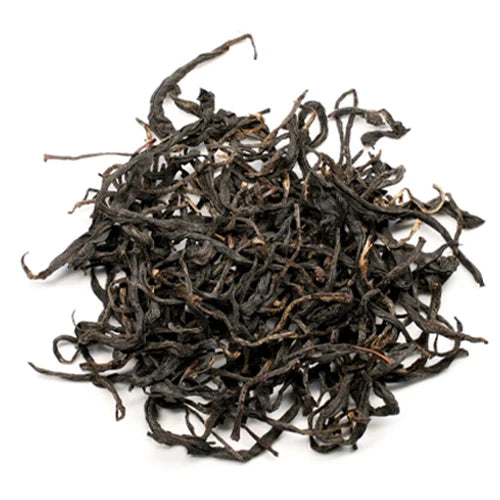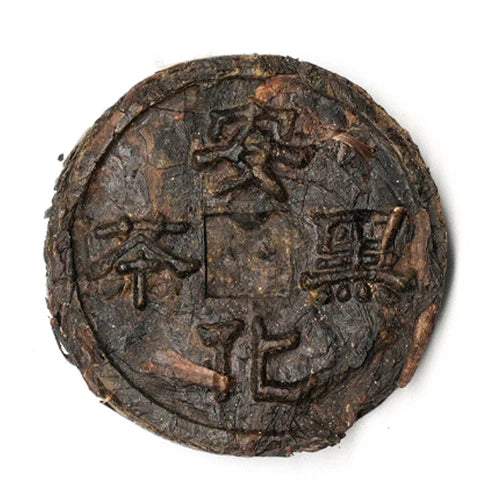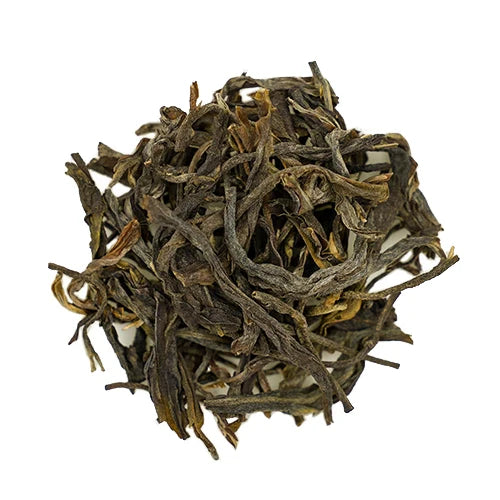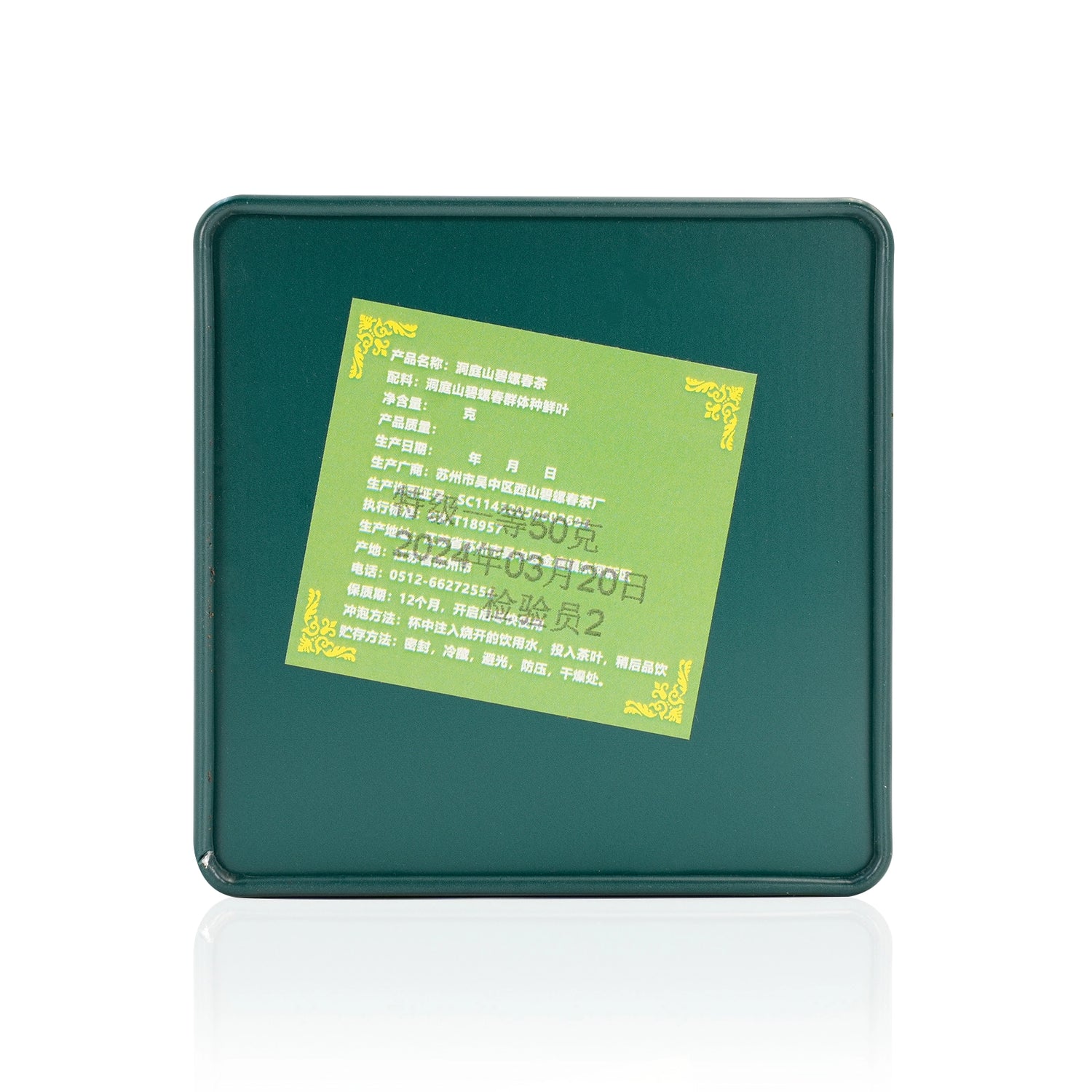Карта китайского зеленого чая
Часто задаваемые вопросы
Нажмите здесь, чтобы выбрать любимый китайский зеленый чай >>>
Если вы заинтересованы в покупке китайского зеленого чая, первым шагом будет знакомство с ним. Понимание различных вкусов и ценовых диапазонов также поможет вам найти правильное соответствие. Вот руководство, которое поможет вам изучить.
Зеленый чай возник в Китае и является одним из старейших видов чая в мире. Он производится из свежих чайных листьев, которые подвергаются термической обработке, скручиваются и высушиваются. Известный своим свежим, травянистым, слегка сладковатым вкусом, зеленый чай уникален среди чаев, поскольку он не окисляется, сохраняя свой естественный зеленый цвет и высокое содержание антиоксидантов. С легким, чистым вкусом, который иногда имеет легкую горчинку, он часто ценится за свои освежающие качества и пользу для здоровья, что делает его фаворитом среди любителей чая.
Главное различие между китайским зеленым чаем и черным чаем заключается в способе их обработки :
Зеленый чай неферментирован , тогда как черный чай подвергается полной ферментации. Это приводит к более легкому, свежему и иногда цветочному вкусу зеленого чая, с оттенками сладости и легкой горчинкой.
Черный чай, напротив, имеет более крепкий, насыщенный вкусовой профиль , часто с фруктовыми или медовыми нотками. Его обычно пьют осенью и зимой из-за его успокаивающего тепла, в то время как зеленый чай хорош круглый год, особенно летом.
Чай улун занимает промежуточное положение между зеленым и черным чаем, так как он частично ферментирован. Это придает улун более сложный вкусовой профиль с фруктовыми, цветочными или даже сливочными нотками. Зеленый чай с его свежим, чистым вкусом сохраняет больше натуральных элементов и обычно более легкий. Если вы предпочитаете мягкие, многослойные вкусы, улун — хороший выбор. Если вам нравятся травяные, чистые вкусы с ноткой сладости, зеленый чай — отличное сочетание.
Японские зеленые чаи, такие как матча и сенча, обычно обрабатываются паром , чтобы остановить окисление, в то время как китайские зеленые чаи обычно обжариваются на сковороде или высушиваются на солнце . Японские зеленые чаи часто имеют более травянистый вкус, тогда как китайские зеленые чаи сильно различаются: от бобового аромата Лунцзина до орхидейных ноток Хуаншань Маофэна или каштанового вкуса Люань Гуапяня.
Китайский зеленый чай, как правило, подходит большинству людей, особенно тем, кто ищет здоровый образ жизни, естественный заряд энергии или поддержку пищеварения. Благодаря умеренному содержанию кофеина и антиоксидантов он полезен для иммунной системы. Чувствительны к кофеину? Попробуйте пить его в начале дня, чтобы избежать нарушений сна.
Однако некоторым людям лучше избегать зеленого чая:
-
Людям с чувствительным желудком: катехины в зеленом чае могут быть немного резкими для желудка, особенно для людей с кислотным рефлюксом, язвой или гастритом, поскольку они могут вызывать дискомфорт.
- Людям с анемией: зеленый чай содержит танины, которые могут связываться с железом в пище, что может повлиять на усвоение железа и усугубить дефицит железа.
- Людям, склонным к бессоннице: содержащийся в зеленом чае кофеин может помочь сосредоточиться и повысить бдительность, но может нарушить сон, если употреблять его вечером или если вы чувствительны к кофеину.
- Лица с проблемами печени: полифенолы в зеленом чае иногда могут влиять на функцию печени. Если у вас есть проблемы с печенью, лучше проконсультироваться с врачом, прежде чем пить зеленый чай.
-
Люди с низким кровяным давлением: полифенолы и кофеин в зеленом чае могут вызвать расслабление кровеносных сосудов и привести к падению кровяного давления, что может вызвать у некоторых людей головокружение или усталость, если они выпьют слишком много.
- Кормящие матери: содержащиеся в зеленом чае кофеин и теобромин могут оказывать негативное влияние на младенцев, поэтому кормящим матерям обычно рекомендуется избегать его употребления.
Китайский зеленый чай богат антиоксидантами, которые, как считается, помогают повысить иммунитет, улучшить пищеварение, поддержать обмен веществ и даже снять стресс.
Он также содержит L-теанин — аминокислоту, которая оказывает успокаивающее действие, уравновешивая кофеин и обеспечивая мягкий, естественный прилив энергии, что делает его идеальным выбором для ежедневного наслаждения.
Главный фактор, влияющий на вкус зеленого чая, — это способ его приготовления. Китайский зеленый чай обычно обрабатывается одним из четырех методов: обжиг на сковороде, сушка в печи, сушка на солнце или пропаривание. Вот более подробный обзор:
- Зеленый чай, обжаренный на сковороде: это наиболее распространенный метод обработки в Китае, при котором листья обжигаются на сковороде при высокой температуре. Он имеет сильный аромат жареного чая и выпускается в нескольких формах. Примерами являются Dragon Well (Longjing) , Biluochun и Xinyang Maojian .
Этот метод придает чаю свежий, растительный аромат с нотками жареного, каштанового и бобового вкуса. Вкус насыщенный и полный, с длительной сладостью. Идеально подходит для тех, кто любит смелые, крепкие вкусы.
-
Зеленый чай, высушенный в печи: этот метод обычно используется для ароматизированных чаев, таких как жасминовый чай, придавая им особенно свежий и стойкий аромат. Примерами являются Хуаншань Маофэн , Тайпин Хоукуй и Люань Гуапянь .
Запеченный зеленый чай: Известен своим легким и элегантным ароматом, с освежающим вкусом. Идеально подходит для людей, ищущих свежий вкус и нежный аромат.
-
Высушенный на солнце зеленый чай: Обычно не пьется как зеленый чай, а как основа для таких чаев, как пуэр. Высушивание на солнце придает ему землистый, интенсивный вкус, такой как Китайский зеленый чай со старого дерева
Этот чай обладает естественным, богатым, землистым вкусом и ароматом, который отлично подойдет тем, кто любит аутентичные, насыщенные вкусы с естественным оттенком.
- Пропаренный зеленый чай: в основном встречается в японских чаях, но иногда и в китайских чаях, таких как Enshi Yulu Green Tea . Пропаривание сохраняет яркий зеленый цвет и свежий вкус с нотками водорослей или бобов.
Этот метод сохраняет больше нежных, ароматических соединений, придавая чаю освежающий, водорослевый вкус, похожий на вкус водорослей или нори. Он идеально подходит для тех, кто ищет уникальные, пикантные вкусы. Если вы поклонник японских зеленых чаев, вам также стоит попробовать этот древний китайский сорт для новых ощущений.
Если вы хотите попробовать разнообразные китайские зеленые чаи, изготовленные с использованием разных технологий, вы можете попробовать набор Green Tea Collection Pack от iTeaworld .
На сорт зеленого чая больше всего влияет сорт листа. Подводя итог, можно сказать, что существуют заметные различия в качестве, вкусе, аромате и стойкости к завариванию между зелеными чаями с одной почкой и одним листом, одной почкой и двумя листами, а также одной почкой и тремя листами:
- Зеленый чай One Bud One Leaf:
Качество: Часто считается высшим сортом зеленого чая из-за нежности почек и богатства их содержимого.
Вкус: Свежий и освежающий, со сладким привкусом и нежным послевкусием.
Аромат: Аромат элегантный и стойкий, часто со свежим, нежным ароматом или запахом бобов.
Стойкость к завариванию: Относительно низкая, так как чайные листья очень нежные и не подходят для длительного заваривания.
- Зеленый чай One Bud Two Leaves:
Качество: Высокое качество, сочетающее нежность почек и зрелость листьев.
Вкус: Вкус свежий и мягкий, с более богатым и полным ощущением во рту по сравнению с сочетанием «одна почка — один лист».
Аромат: Аромат остается свежим, но немного более интенсивным, чем у одной почки и одного листа.
Стойкость к завариванию: лучше, чем у однолистового зеленого чая с одной почкой, что позволяет заваривать его несколько раз.
- Зеленый чай One Bud Three Leaves:
Качество: относительно зрелое, с более крепким вкусом.
Вкус: Вкус крепкий, с более высокой устойчивостью к настаиванию, но может быть не таким свежим и освежающим, как у зеленого чая с одной почкой и одним листом или с одной почкой и двумя листьями.
Аромат: Аромат может быть более приглушенным, с более насыщенным многослойным оттенком по мере созревания листьев.
Стойкость к завариванию: Лучшая, так как чайные листья содержат больше полифенолов и кофеина, подходит любителям чая, предпочитающим крепкий вкус.
Время сбора урожая: Зеленый чай с одной почкой и одним листом обычно собирают ранней весной, когда питательные вещества чайного дерева концентрируются, что приводит к лучшему качеству чая. Зеленый чай с одной почкой и двумя листами и один бутоном и тремя листами собирают в середине и конце весны соответственно.
Внешний вид: Зеленый чай с одним листом и одной почкой имеет наиболее однородный вид, с пухлыми почками и эстетически приятной формой. По мере увеличения количества листьев в зеленых чаях с одним листом и одной почкой и тремя листами внешний вид постепенно становится более крепким.
Методы обработки: Различные сорта зеленого чая могут обрабатываться по-разному, чтобы подчеркнуть их характеристики. Например, зеленый чай с одним листом и одной почкой может потребовать более деликатных процессов умерщвления и сушки.
Позиционирование на рынке: Однолистовой зеленый чай с одной бутоном обычно позиционируется на рынке высокого класса, в то время как двухлистовой и трехлистовой зеленый чай больше подходят для повседневного употребления.
В целом, зеленый чай One bud one sheet любим любителями чая за его нежность и высокое качество, зеленый чай One bud two leaves представляет собой хороший баланс между качеством и ценой, а зеленый чай One bud three leaves подойдет тем, кто предпочитает крепкий вкус и высокую стойкость настоя.
Если вы хотите понять разницу в сортах зеленого чая на примере одной коробки чая, вы можете попробовать набор зеленого чая, в который входят разные сорта (например, Хуаншань Маофэн и Лунцзин).
Весенний чай : первый чай сезона, ценится за нежные листья, высокое содержание L-теанина и нежную сладость. Особенно ценится чай Мин Цянь (до весенних дождей).
Летний чай : растет быстрее и имеет более крепкий, слегка горьковатый вкус. Обычно он более доступен и хорошо подходит в качестве повседневного чая.
Если вам интересно, как разные сезоны влияют на зеленый чай, вы можете попробовать коллекцию зеленого чая разных сезонов, взяв в качестве примера Билуочунь. Таким образом, вы сможете ощутить нюансы, которые каждый сезон привносит во вкусовой профиль зеленого чая .
Китайские зеленые чаи из известных регионов обладают уникальными вкусами и качествами благодаря уникальным условиям выращивания и методам обработки. Например, West Lake Dragon Well (Xihu Longjing) известен своим нежным вкусом бобов и длительной сладостью, которую многие считают достойной этой цены.
Однако в близлежащих районах можно приобрести блюда с похожими вкусовыми характеристиками по более доступной цене, что позволяет легко наслаждаться классическими вкусами, не переплачивая.
Вот некоторые известные китайские зеленые чаи и их характеристики:
Западное озеро Лунцзин (Колодец Дракона)
Происхождение: Западный Озёрный край, Ханчжоу, Чжэцзян
Особенности: Известный своими бобовыми и цветочными ароматами, он имеет сладкий и освежающий вкус с длительным послевкусием, его часто считают лучшим китайским чаем.
Дунтин Билуочунь
Происхождение: гора Дунтин, Сучжоу, Цзянсу.
Особенности: Листья плотно скручены, имеют насыщенный цветочно-фруктовый аромат, сладкий и мягкий вкус и яркий зеленый цвет.
Хуаншань Маофэн
Происхождение: Хуаншань, Аньхой.
Особенности: Имеет натуральный аромат каштана, прозрачный желто-зеленый настой и свежий, мягкий вкус.
Синьян Маоцзянь
Происхождение: Синьян, Хэнань.
Особенности: Чайные листья тонкие и игольчатые, с тонким океаническим ароматом и свежим, сладким послевкусием.
Тайпин Хокуй
Происхождение: недалеко от озера Тайпин, Хуаншань, Аньхой.
Особенности: Листья широкие и плоские, с насыщенным ароматом орхидеи, сладким чайным настоем и длительным послевкусием.
Луань Гуапянь
Происхождение: Луань, Аньхой
Особенности: Листья имеют уникальную форму семян дыни, обладают характерным ароматом, насыщенным вкусом и длительным сладким послевкусием.
Дуюнь Маоцзян
Происхождение: Дуюнь, Гуйчжоу.
Особенности: Обладает насыщенным каштановым ароматом, прозрачным зеленым настоем и освежающим вкусом.
Энши Юлу
Происхождение: Эньши, Хубэй.
Особенности: Изготовленный с использованием технологии паровой обработки, он имеет свежий травянистый аромат и четкий, освежающий вкус.
Анжи Бай Ча
Происхождение: Анжи, Чжэцзян.
Особенности: Листья имеют нефритово-белый цвет, нежный, сладкий вкус и легкий аромат орхидеи.
Мэндинг Ганлу
Происхождение: гора Мэндин, Яань, Сычуань.
Особенности: Имеет легкий цветочно-фруктовый аромат, прозрачный и мягкий настой и сладкий, нежный вкус.
Эти зеленые чаи не только демонстрируют свои региональные особенности, но и представляют собой разнообразный спектр методов производства и давнюю культуру чая. Независимо от того, новичок ли вы в зеленом чае или опытный ценитель чая, вы можете найти среди этих вариантов сорт, который соответствует вашему вкусу.
Если вы заинтересованы в том, чтобы попробовать эти знаменитые китайские зеленые чаи, вы можете изучить нашу тщательно отобранную коллекцию премиальных зеленых чаев и их индивидуальные предложения.
Если вы новичок в китайском зеленом чае, начните с некоторых вариантов для новичков, таких как West Lake Longjing, Biluochun, Huangshan Maofeng и Liu'an Guapian. Эти чаи обладают привлекательными вкусами, которые легко оценить, и предлагают прекрасное введение в разнообразие китайских зеленых чаев. Вы даже можете попробовать эти чаи в дегустационном наборе для новичков, чтобы получить представление о каждом из них, прежде чем выбрать любимый .
Хотите обновить свой выбор зеленого чая, но хотите убедиться, что это того стоит? Есть несколько ключевых факторов, на которые следует обращать внимание при выборе высококачественного зеленого чая, который предлагает большую ценность:
Опытные мастера чая: ищите чай, приготовленный мастерами с опытом работы не менее 20 лет.
Прямые поставки от фермеров: это гарантирует, что вы платите за качество, а не за посредников.
Превосходное качество листьев: для приготовления высококачественного чая часто используют одну почку и 1-2 листочка, причем листья чистые, отсортированные вручную.
Весенний сбор: свежий чай собирают весной, когда листья достигают пика цветения.
Аутентичные сорта: выбирайте старинные чайные деревья, чтобы ощутить чистый, аутентичный вкус Китая.
Самые ценные китайские зеленые чаи производятся с исключительным мастерством и качеством листьев. Некоторые чаи создаются признанными на национальном уровне мастерами, в то время как другие изготавливаются менее известными мастерами, которые овладели этим искусством на протяжении десятилетий. Эти чаи часто столь же изысканны, но более доступны по цене. Наш выбор премиальных китайских зеленых чаев приносит вам лучшее из обоих миров.
Китайский зеленый чай, который всегда мягкий и никогда не горький
Лунцзин, Люань Гуапянь и Хуаншань Маофэн — отличный выбор для мягкого, не горького чая. Просто заварите их при температуре воды 80-85°C (175-185°F), и вы насладитесь сладкой, освежающей чашкой.
Если вас интересуют чаи, приготовленные из диких или древних чайных деревьев, они привносят натуральный превосходный вкус и наследие. В нашем ассортименте представлены дикие и древние чайные деревья, приготовленные лучшими чайными мастерами, предлагающими редкие материалы в сочетании с утонченным мастерством для исключительного опыта, который также имеет справедливую цену за его качество.
Заваривание китайского зеленого чая для лучшего вкуса
Чтобы раскрыть лучшие вкусы китайского зеленого чая, заваривайте его при температуре 75-85°C (165-185°F) с 2-3 граммами чая на чашку в течение примерно 1 минуты. Отрегулируйте температуру воды в зависимости от типа чая для сбалансированного, мягкого вкуса:
Одна почка, один лист: используйте температуру 70–75 °C для получения нежного аромата и мягкого вкуса.
Одна почка, два листа: используйте температуру 75–80 °C для более полного и округлого вкуса.
Одна почка, три листа: для более интенсивного вкуса используйте температуру 85°C.
С помощью чайника с регулируемой температурой вы можете легко поддерживать нужную температуру воды для каждого заваривания.
Для сохранения свежести и вкуса храните зеленый чай в сухом, прохладном, темном месте в герметичном, непрозрачном контейнере для защиты от влаги и солнечного света. Если возможно, храните его при температуре 5°C (40°F) в холодильнике для хранения чая. Обязательно каждый раз запечатывайте контейнер, чтобы свести к минимуму воздействие воздуха.
Вот несколько общих советов по употреблению китайского зеленого чая:
Лучшее время для употребления: примерно через час после еды, чтобы помочь пищеварению и избежать раздражения желудка.
Хранение: храните зеленый чай вдали от света, влаги и резких запахов.
Избегайте, если: у вас чувствительный желудок, проблемы со сном или вы беременны. В этих случаях проконсультируйтесь с врачом.
Во время приема лекарств: не пейте зеленый чай вместе с лекарствами, так как это может повлиять на их усвоение.






































































































































